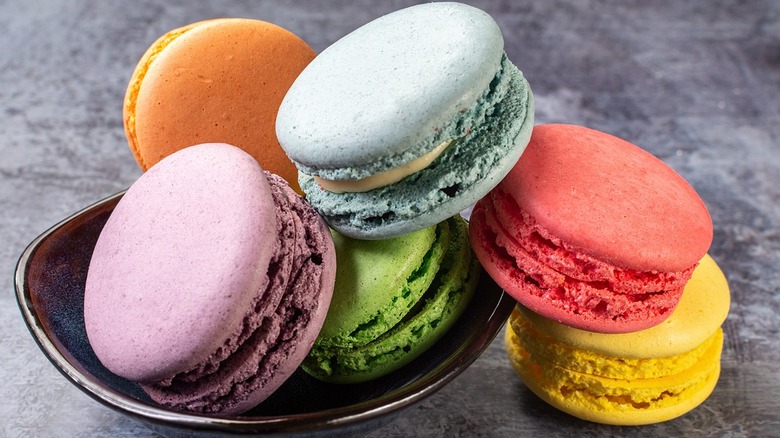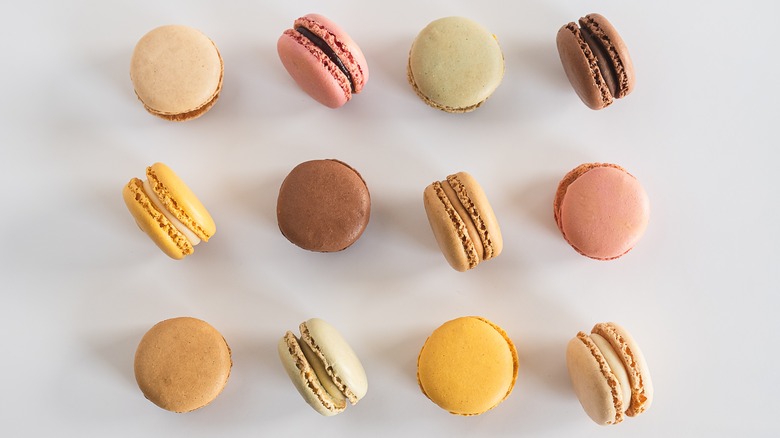The Key To Perfect Macarons Is How You Mix Them
Even the most experienced bakers balk at preparing macarons. These French sandwich cookies have a meringue and almond flour base that gives them a crisp outside and chewy interior. They come in endless flavors, and you can pipe any filling into the center. However, there's an art to making macarons. Mixing the batter to perfection takes practice, and there's little room for error
All macaron flavors begin with egg whites, which get whipped into stiff peaks with cream of tartar and sugar. You'll know it's time to stop mixing when the meringue stands up straight after you pull out the whisk. From there, fold in the dry ingredients and pipe the batter into cookies. Before baking, slam the pan of raw cookies on the counter several times to release air bubbles, and let them sit for about 30 minutes at room temperature.
If you get them right, macarons make a great gift because they're beautiful, delicious, and a labor of love. However, be careful to avoid common macaron mistakes.
How to tell if your macarons are over or under-mixed
All the best macaron flavors begin with the same ingredients and follow the same basic steps. That doesn't mean they're simple to make. They're one of the most challenging cookies to perfect because it's easy to over or under-mix the batter.
If your macarons don't turn out how you'd hoped, there's a good chance you're either mixing them too much or not enough. The texture of the batter changes dramatically as you combine it, and without achieving the perfect consistency, your cookies will flop. Fold the dry ingredients into the wet ingredients until you have a glossy mixture. When you drip batter off your spatula, you should be able to form a figure-8 at the bottom.
Look for a batter that will hold its shape when piped onto parchment. Wilton compares the ideal texture to honey, explaining that you should fold the mixture about 45 times to reach that point. The final cookie should have a smooth and shiny top.

